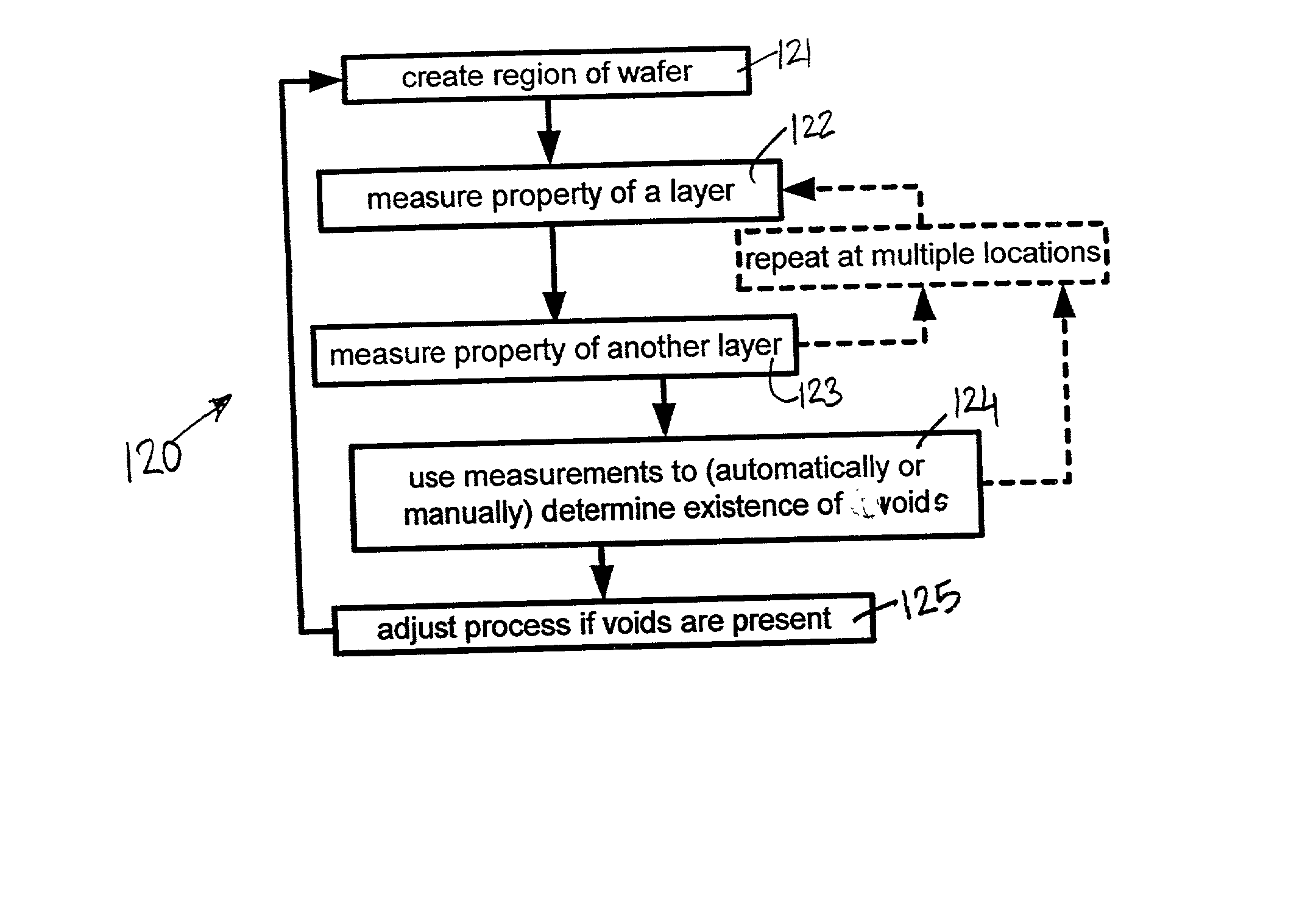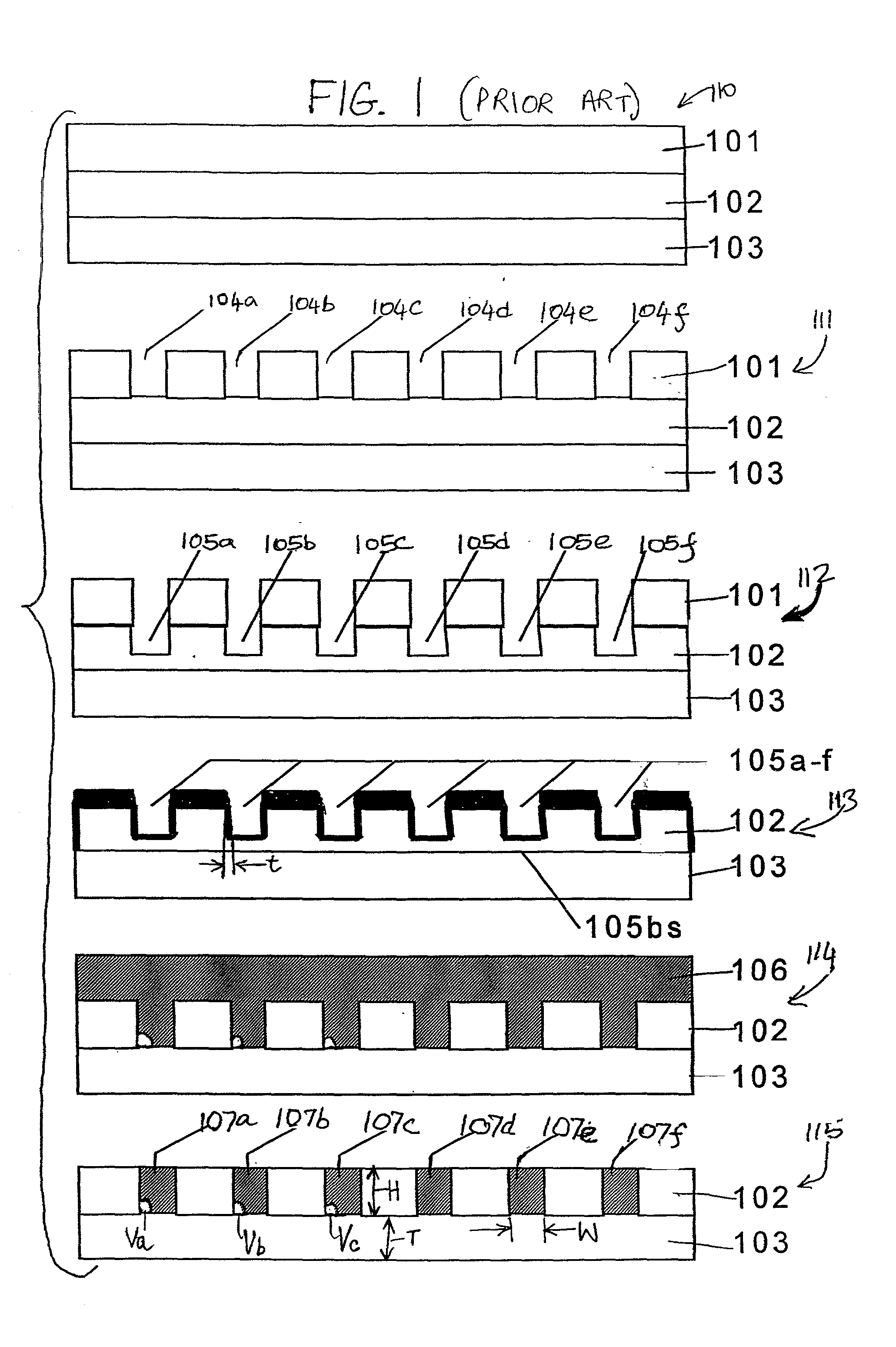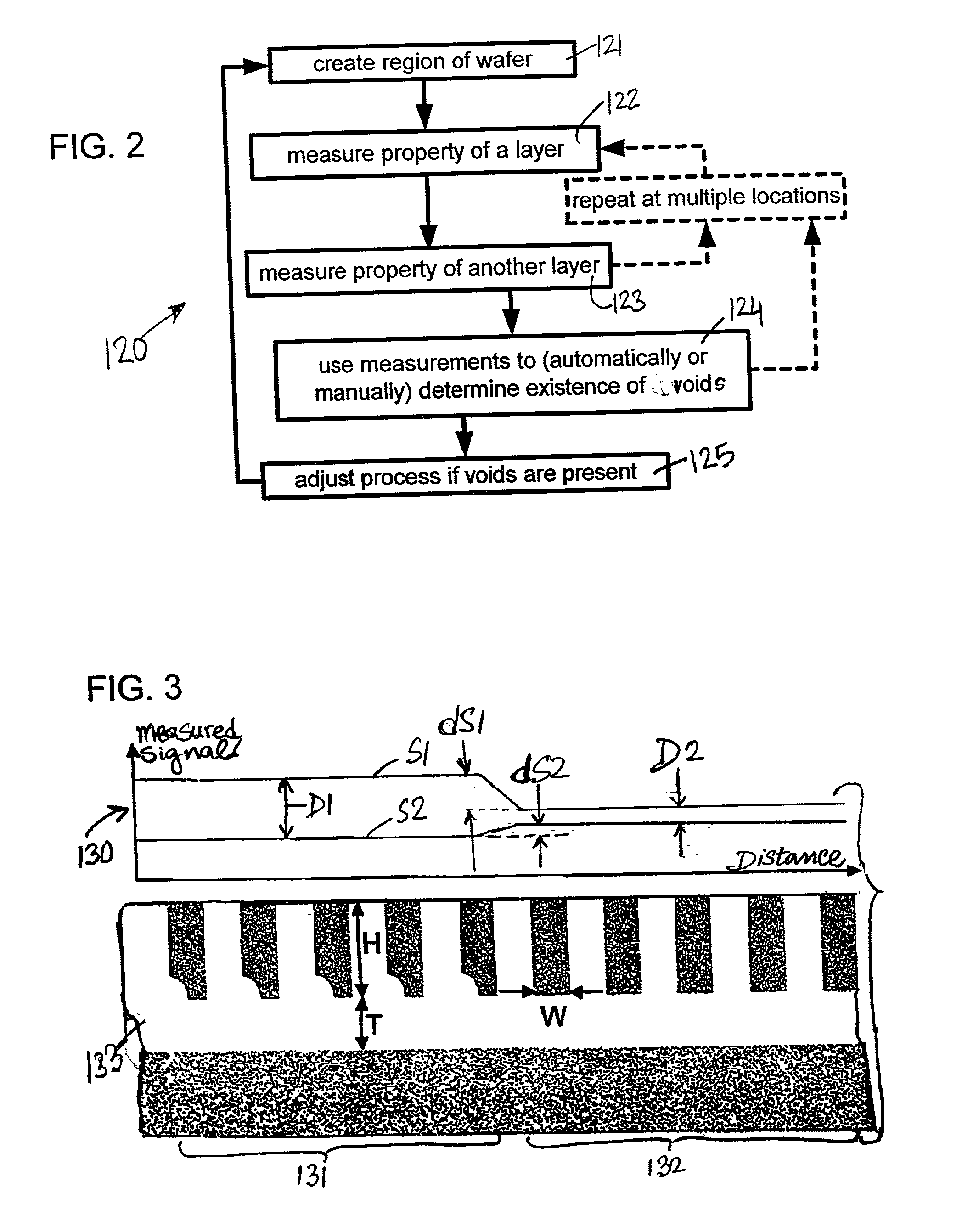Evaluating a multi-layered structure for voids
a multi-layered structure and void technology, applied in the direction of optical radiation measurement, semiconductor/solid-state device testing/measurement, instruments, etc., can solve the problems of void formation, void formation, void formation, etc., and achieve the effect of reducing or eliminating voids
- Summary
- Abstract
- Description
- Claims
- Application Information
AI Technical Summary
Benefits of technology
Problems solved by technology
Method used
Image
Examples
Embodiment Construction
[0036] One embodiment measures (e.g. see acts 122 and 123 in FIG. 2) properties of two layers of a structure, and uses the two measured signals to determine existence of voids (see act 124). Measurements (as illustrated by signals S1 and S2 in FIG. 3) change depending on the presence and absence of voids (see the change in signals S1 and S2 in regions 131 and 132 respectively) when a scan is performed across a wafer. In the example illustrated in FIG. 3, signal S1 reduces by the amount dS1 and signal S2 increases by an amount dS2, so that a separation D1 between S1 and S2 in the presence of voids is reduced to the separation D2.
[0037] The above-described acts 122-124 for finding voids are effective even in a damascene structure that is formed in the normal manner, e.g. by etching grooves in a dielectric layer and forming conductive traces (also called "lines") inside the grooves as illustrated in FIG. 1. During fabrication of the damascene structure, voids can be formed between the ...
PUM
 Login to View More
Login to View More Abstract
Description
Claims
Application Information
 Login to View More
Login to View More - R&D
- Intellectual Property
- Life Sciences
- Materials
- Tech Scout
- Unparalleled Data Quality
- Higher Quality Content
- 60% Fewer Hallucinations
Browse by: Latest US Patents, China's latest patents, Technical Efficacy Thesaurus, Application Domain, Technology Topic, Popular Technical Reports.
© 2025 PatSnap. All rights reserved.Legal|Privacy policy|Modern Slavery Act Transparency Statement|Sitemap|About US| Contact US: help@patsnap.com



